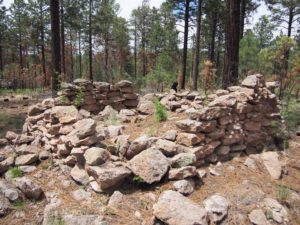
PROCEEDINGS OF THE NATIONAL ACADEMY OF SCIENCES—A recent study* of an ancient wildland-urban interface managed by ancestors of Jemez Pueblo in northern New Mexico could provide an alternate model for modern fire management. As communities expand into fire-prone wildland regions, the threat of wildfire hazards such as property loss increase. Christopher I. Roos and colleagues worked with the Pueblo of Jemez and three other tribes to reconstruct fire use and human impact near settlements in the dry ponderosa pine forests of the Jemez Mountains across centuries. The authors analyzed charcoal and pollen from six sites to look at patterns of fire activity, vegetation change, and herbivore abundance over a 2,000 year period. The authors modeled fire behavior over time by factoring in population size, agricultural land use, fuelwood harvest, and human ignition. Initial settlement from 1100-1300 CE increased fire frequency in the landscape. Wood harvesting and frequent, patchy fires led to landscape that burned often but not extensively. Population collapse following the Spanish invasion brought the return of frequent, widely spreading fires. According to the authors, the landscape avoided extreme fire behavior even given large fires or conducive conditions like drought, and the experiences could inform local management of fire and fuels at modern wildland-urban interfaces.
______________________________

Archaeological remains of a “fieldhouse” in Jemez ponderosa pine forests. More than 3,000 similar structures surround more than two dozen villages and towns occupied by Jemez people from 1100-1700 CE. Kacy Hollenback
______________________________
Article Source: PROCEEDINGS OF THE NATIONAL ACADEMY OF SCIENCES news release
*”Native American fire management at an ancient wildland-urban interface in the Southwest United States,” by Christopher I. Roos et al.
______________________________
Advertisement





